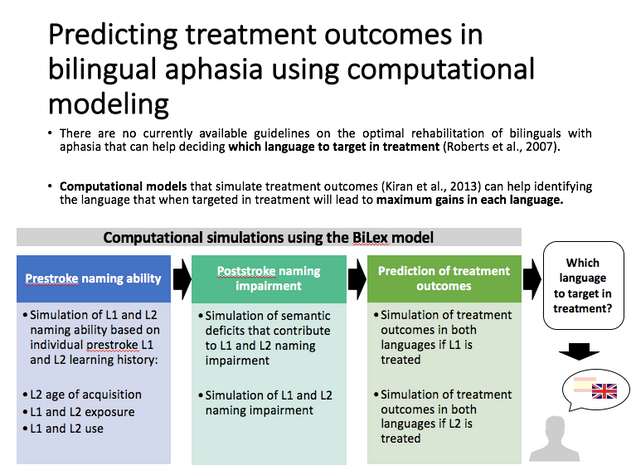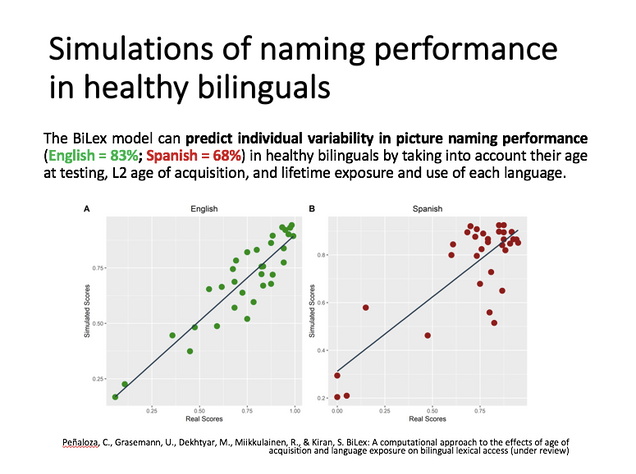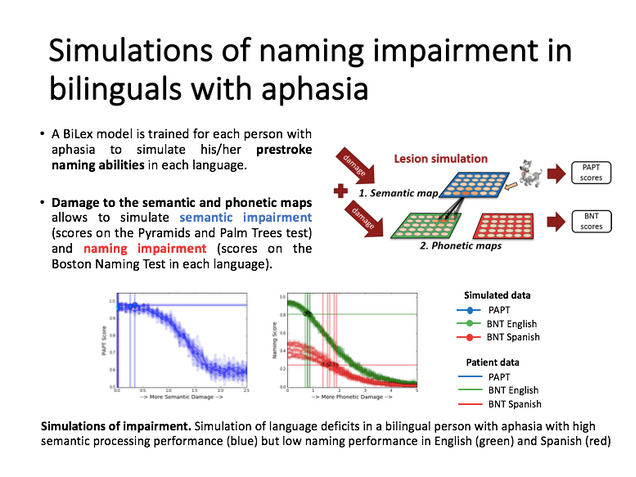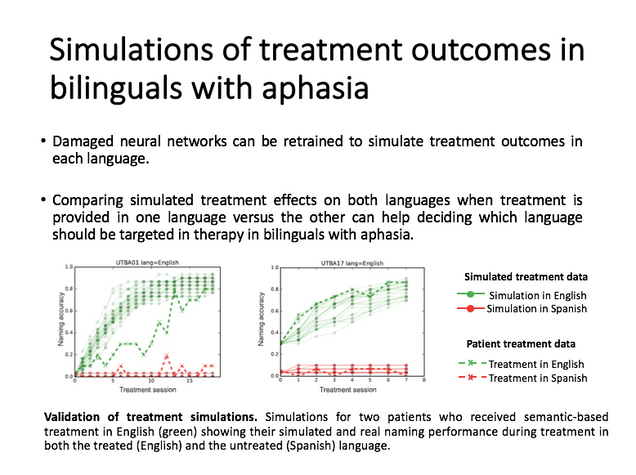Predicting Rehabilitation Outcomes in Bilingual Aphasia using Computation Modeling (PROCOM)
Predicting rehabilitation outcomes in bilingual aphasia using computational modeling
Predicting treatment outcomes in bilingual speakers with aphasia is of outmost clinical importance given the prevalence of stroke in a worldwide increasing bilingual population and the current need of treatment guidelines for their optimal rehabilitation (Roberts & Kiran, 2007). The overarching goal of this study is to develop a computational model that can reliably predict the optimal language of treatment for bilinguals with aphasia that will result in maximum treatment gains in both the treated and the untreated language. Based on our previous computational modeling research (Miikkulainen & Kiran, 2009; Kiran et al., 2013) and theoretical accounts of the bilingual mental lexicon (Kroll & Stewart, 1994) we developed BiLex (Peñaloza et al., under review), a neural network-based model that can contribute to this aim across three sets of computational simulations:
- Simulations of L1 and L2 naming performance in healthy bilinguals. The BiLex model is first used to simulate L1 and L2 picture naming scores in healthy bilinguals with varying degrees of language proficiency, taking into account each individual’s age at testing, their L2 age of acquisition and lifetime exposure and use of each language. This validates the model’s capacity to simulate prestroke L1 and L2 naming abilities in bilinguals with aphasia.
- Simulations of L1 and L2 naming impairment in bilinguals with aphasia. Each BiLex individual model simulating prestroke L1 and L2 naming ability for a bilingual speaker with aphasia is then lesioned to simulate his/ her semantic and naming impairment in L1 and L2 as observed in standardized language tests.
- Simulations of treatment outcomes in bilinguals with aphasia. Each lesioned BiLex model can be retrained to simulate treatment outcomes in both the trained and untrained language under two independent scenarios: (i) when L1 is the target language of treatment and (ii) when L2 is the target language of treatment. The comparison of outcomes across these two alternative scenarios allows the model determining the optimal language of treatment for each particular bilingual with aphasia.
As in previous treatment studies (Edmonds & Kiran, 2006; Kiran & Roberts, 2010) our bilingual participants with aphasia undergo a semantic-feature analysis treatment in one or the other language (i.e., model prescribed vs model opposite group) to improve naming deficits. Their treatment outcomes in both the treated and the untreated language are contrasted against the predictions of the model to validate its predictive capacity. This study also seeks to further provide a computational account of different patterns of cross-language generalization and to expand the current architecture and functional organization of the BiLex model from Spanish-English to Chinese-English.




